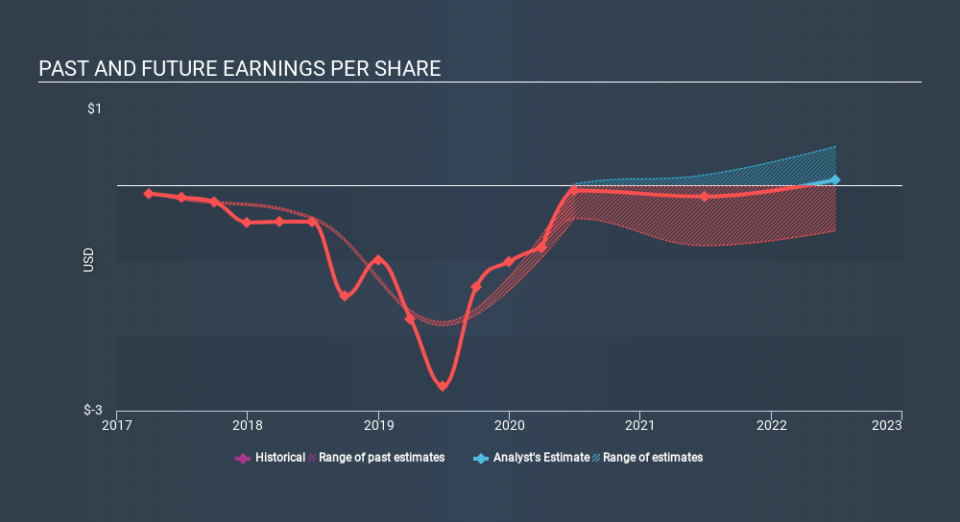Market Sentiment Around Loss-Making Atlassian Corporation Plc (NASDAQ:TEAM)

Atlassian Corporation Plc's (NASDAQ:TEAM): Atlassian Corporation Plc, through its subsidiaries, designs, develops, licenses, and maintains various software products worldwide. The US$38b market-cap posted a loss in its most recent financial year of -US$637.6m and a latest trailing-twelve-month loss of -US$202.9m shrinking the gap between loss and breakeven. Many investors are wondering the rate at which TEAM will turn a profit, with the big question being “when will the company breakeven?” Below I will provide a high-level summary of the industry analysts’ expectations for TEAM.
Check out our latest analysis for Atlassian
Consensus from the 21 Software analysts is TEAM is on the verge of breakeven. They expect the company to post a final loss in 2021, before turning a profit of US$13m in 2022. So, TEAM is predicted to breakeven approximately 2 years from now. What rate will TEAM have to grow year-on-year in order to breakeven on this date? Using a line of best fit, I calculated an average annual growth rate of 52%, which signals high confidence from analysts. If this rate turns out to be too aggressive, TEAM may become profitable much later than analysts predict.
Given this is a high-level overview, I won’t go into details of TEAM’s upcoming projects, but, take into account that typically a high forecast growth rate is not unusual for a company that is currently undergoing an investment period.
One thing I would like to bring into light with TEAM is its debt-to-equity ratio of 107%. Generally, the rule of thumb is debt shouldn’t exceed 40% of your equity, which in TEAM’s case, it has significantly overshot. Note that a higher debt obligation increases the risk in investing in the loss-making company.
Next Steps:
There are key fundamentals of TEAM which are not covered in this article, but I must stress again that this is merely a basic overview. For a more comprehensive look at TEAM, take a look at TEAM’s company page on Simply Wall St. I’ve also compiled a list of relevant aspects you should further examine:
Valuation: What is TEAM worth today? Has the future growth potential already been factored into the price? The intrinsic value infographic in our free research report helps visualize whether TEAM is currently mispriced by the market.
Management Team: An experienced management team on the helm increases our confidence in the business – take a look at who sits on Atlassian’s board and the CEO’s back ground.
Other High-Performing Stocks: Are there other stocks that provide better prospects with proven track records? Explore our free list of these great stocks here.
If you spot an error that warrants correction, please contact the editor at editorial-team@simplywallst.com. This article by Simply Wall St is general in nature. It does not constitute a recommendation to buy or sell any stock, and does not take account of your objectives, or your financial situation. Simply Wall St has no position in the stocks mentioned.
We aim to bring you long-term focused research analysis driven by fundamental data. Note that our analysis may not factor in the latest price-sensitive company announcements or qualitative material. Thank you for reading.

 Yahoo Finance
Yahoo Finance 
